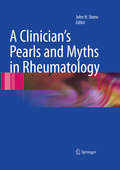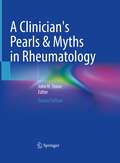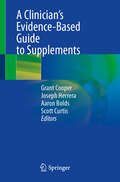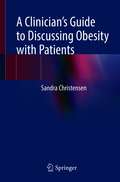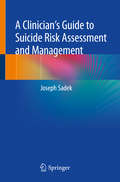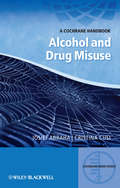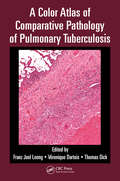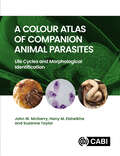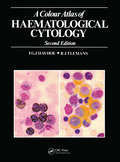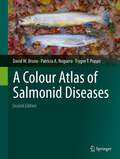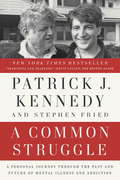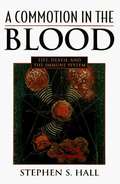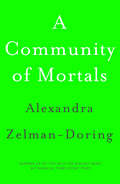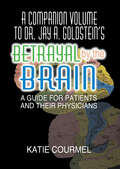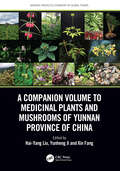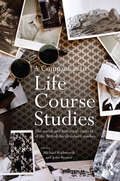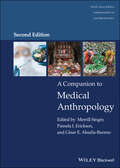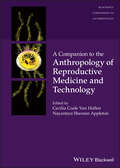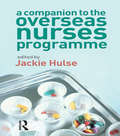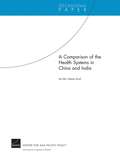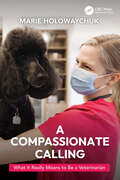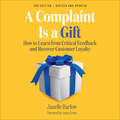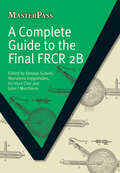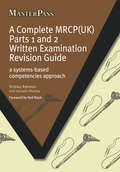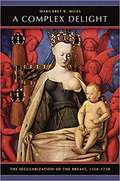- Table View
- List View
A Clinician's Pearls & Myths in Rheumatology
by John H. StoneImportant strides have been made in understanding the pathophysiologic basis of many inflammatory conditions in recent years, but rheumatology remains a discipline in which diagnosis is rooted in the medical history skillfully extracted from the patient, the careful physical examination, and the discriminating use of laboratory tests and imaging. Moreover, selection of the most appropriate therapy for patients with rheumatic diseases also remains heavily reliant upon clinical experience. Medical disciplines such as rheumatology that depend significantly upon clinical wisdom are prone to the development of systems of 'Pearls' and 'Myths,' related to the diseases they call their own, a 'Pearl' being a nugget of truth about the diagnosis or treatment of a particular disease that has been gained by dint of clinical experience and a 'Myth' being a commonly held belief that influences the practice of many clinicians - but is false. This book will pool together the clinical wisdom of seasoned, expert rheumatologists who participate in the care of patients with autoimmune diseases, systemic inflammatory disorders, and all other rheumatic conditions.
A Clinician's Pearls & Myths in Rheumatology
by John H. StoneThis book builds upon the first edition with new and improved chapters. The book explores the rich assemblage of clinical wisdom from expert rheumatologists from a wide range of specialties including Vasculitis and Sjogren’s syndrome. It examines the nuggets or ‘pearls’ of wisdom gained from collective clinical experience about the diagnosis or treatment of various diseases whilst also aiming to debunk myths that have influenced the practice of rheumatology by many clinicians. The second edition of A Clinician's Pearls and Myths in Rheumatology is a critical resource for both practitioners and students of rheumatology. This book provides a clear guide for those wishing to take a “deep dive” into the diagnostic and therapeutic elements of rheumatology.
A Clinician’s Evidence-Based Guide to Supplements
by Grant Cooper Scott Curtis Joseph Herrera Aaron BoldsNutritional supplements are ubiquitous. A physician may be asked 10-20 times a day about various supplements. That same physician ends up relying primarily on the internet for information about the supplements. Currently, there is no single, easy-to-use reference for a physician to access to learn about the evidence behind different common supplements. This text fills that gap by allowing physicians to be able to educate themselves and their patients about important supplements in terms of what the data actually says about those supplements, how they work or don't work on different problems and also how those supplements may interact with a patient's medications.The chapters are organized alphabetically by supplement to make it easy for a physician to reference which one they are specifically looking for. There are eight chapters total as well as an introduction and conclusion. Each supplement is broken down into subsections such as what is it and howit works in the body, what is it used for and at what dosage, evidence for or against its different uses, safety concerns, side effects, and precautions and interactions with other medications. Written by experts in the field, An Evidence-Based Guide to Supplements appeals to practicing physicians of every specialty that interact with patients. Supplements are asked about in almost every medical office but especially with primary care physicians, neurologists, psychiatrists, pediatricians, geriatric medicine professionals, pain medicine specialists and rheumatologists.
A Clinician’s Guide to Discussing Obesity with Patients
by Sandra ChristensenThis practical book provides effective, time-efficient strategies for initiating and continuing productive conversations about weight that can be incorporated into any practice setting. It will benefit all clinicians—advanced practice nurses, physician assistants, physicians—from students to experienced providers, whether they provide obesity treatment or refer to those who do.This guide addresses the numerous barriers that clinicians encounter when they contemplate or attempt conversations about weight and provides strategies to reduce and overcome these barriers. It guides clinicians step-by-step through the concepts and skills needed to have conversations that lead to improved health. Each chapter provides useful tools and information about how to move the conversation forward in a respectful, skillful manner. Real life clinical scenarios provide examples of short, productive conversations that incorporate the tools into clinical practice. Many clinicians recognize the importance of discussing weight with their patients yet feel unprepared to do so. Most did not learn about obesity or how to talk about it in their clinical educational programs and have little access to continuing education. Without the knowledge and skills to start a productive conversation, many avoid the topic. This avoidance has a negative impact on the health of those with obesity and pre-obesity. Given that obesity treatment improves outcomes, it is imperative that clinicians are skilled at discussing weight with knowledge and sensitivity. This book meets that gap.
A Clinician’s Guide to Suicide Risk Assessment and Management
by Joseph SadekThis book offers mental health clinicians a comprehensive guide to assessing and managing suicide risk. Suicide has now come to be understood as a multidimensionally determined outcome, which stems from the complex interaction of biological, genetic, psychological, sociological and environmental factors. Based on recent evidence and an extensive literature review, the book provides straightforward, essential information that can easily be applied in a wide variety of disciplines.
A Cochrane Handbook of Alcohol and Drug Misuse
by Cristina Cusi Iosief AbrahaAddiction to drugs and alcohol is an increasing problem that all clinicians have to deal with. This Cochrane Handbook of Alcohol and Drug Misuse serves as a concise guide to the evidence base for relevant interventions, highlighting the key points of Cochrane reviews for the busy practitioner. It covers a wide range of pharmacological and psychosocial treatments for opioid, alcohol, cocaine and other stimulant and drug misuse, offering comprehensive coverage of interventions for drug and alcohol addiction.
A Color Atlas of Comparative Pathology of Pulmonary Tuberculosis
by Franz Joel Leong Véronique Dartois Thomas DickAn annual death toll of 2 million, coupled with rising drug resistance, highlights the need for the development of new drugs, better diagnostics, and a tuberculosis (TB) vaccine. Addressing these key issues, A Color Atlas of Comparative Pathology of Pulmonary Tuberculosis introduces TB histopathology to the non-histopathologists, students, scientis
A Colour Atlas of Companion Animal Parasites: Life Cycles and Morphological Identification
by John McGarry Hany Elsheikha Suzanne TaylorA Colour Atlas of Companion Animal Parasites: Life Cycles and Morphological Identification illustrates how to identify common parasites of dogs, cats and horses using simple morphological features. It presents parasite life cycles in straightforward, accurate terms, and covers: - the general features of major arthropods, helminths and protozoa of dogs, cats and horses; - morphological identification of both adult parasites and their immature stages in tissues, with particular consideration given to differential identification; - major parasites of companion animals which may shift regions because of climate change, animal movement and other anthropogenic factors. Parasite identification is fundamental, not only for planning treatment, prevention and management of parasitic disease, but also for surveillance of invasive exotic parasites and for monitoring the spread of endemic species. With 600 parasite specimens photographed and annotated as a quick reference resource, this book mirrors what a practitioner might view down a microscope, bringing the subject alive. It forms a complete and practical resource for all veterinary students, veterinarians, and anyone interested in parasite control.
A Colour Atlas of Haematological Cytology
by Hayhoe/FlemansThe second edition of this atlas has been revised and greatly en-larged to take account of recent diagnostic advances in the field of haematology. It contains 750 color photomicrographs of common and less common cell types, and is intended to supplement the per-sonal study of preparations under the microscope.The photographs are grouped into five sections covering red cells and their precursors; nonerythroid cells of myeloid origin; lympho-cytes, plasma cells and their derivatives and precursors; miscella-neous cells of blood and marrow, including foreign cells and para-sites; and the imprint cytology of lymph nodes and spleen. Each section is preceded by a brief introduction, and an appendix pro-vides technical details of staining methods. The text accompanying the illustrations serves chiefly to identify the cells, but also gives explanations of certain unusual appearances and the cytochemical reactions where necessary.A Colour Atlas of Haematological Cytology will be useful to students of medicine and medical laboratory science, as well as to doctors and technicians specializing in the diagnosis of haematological disease.
A Colour Atlas of Salmonid Diseases
by David W. Bruno Patricia A. Noguera Trygve T. PoppeSalmonids have widespread economic and environmental importance. Correct identification and understanding of their diseases are therefore vital if valuable stocks are to be maintained. This volume provides a practical guide and an aid to disease recognition. This is an updated and extended version of the first publication in 1996 and contains around 400 high quality colour photomicrographs.
A Common Struggle: A Personal Journey Through the Past and Future of Mental Illness and Addiction
by Stephen Fried Patrick J. Kennedy**A New York Times Bestseller**Patrick J. Kennedy, the former congressman and youngest child of Senator Ted Kennedy, details his personal and political battle with mental illness and addiction, exploring mental health care's history in the country alongside his and every family's private struggles.On May 5, 2006, the New York Times ran two stories, "Patrick Kennedy Crashes Car into Capitol Barrier" and then, several hours later, "Patrick Kennedy Says He'll Seek Help for Addiction." It was the first time that the popular Rhode Island congressman had publicly disclosed his addiction to prescription painkillers, the true extent of his struggle with bipolar disorder and his plan to immediately seek treatment. That could have been the end of his career, but instead it was the beginning. Since then, Kennedy has become the nation's leading advocate for mental health and substance abuse care, research and policy both in and out of Congress. And ever since passing the landmark Mental Health Parity and Addiction Equity Act--and after the death of his father, leaving Congress--he has been changing the dialogue that surrounds all brain diseases.A Common Struggle weaves together Kennedy's private and professional narratives, echoing Kennedy's philosophy that for him, the personal is political and the political personal. Focusing on the years from his 'coming out' about suffering from bipolar disorder and addiction to the present day, the book examines Kennedy's journey toward recovery and reflects on Americans' propensity to treat mental illnesses as "family secrets."Beyond his own story, though, Kennedy creates a roadmap for equality in the mental health community, and outlines a bold plan for the future of mental health policy. Written with award-winning healthcare journalist and best-selling author Stephen Fried, A Common Struggle is both a cry for empathy and a call to action. From the Hardcover edition.
A Commotion in the Blood: Life, Death, and the Immune System (The Sloan Technology Series)
by Stephen S. HallIn this layman's history of immunology, Stephen S. Hall traces the story of how doctors have learned to harness the immune system and its "commotions" in the blood to develop new approaches to the treatment of cancer. He portrays the doctors and research scientists of note, starting with William Coley in the late 1890s, who have contributed to modern understanding of immunology while uncovering the roles of interferon, interleukins, T cells, B cells, necrosis factors, and more. He brings to life the sometimes contentious personalities and organizations involved in the race to find a miracle cure for cancer, and explores the experimental trials of a wide array of cutting-edge therapies through 1997, the date of publication.
A Community of Mortals
by Alexandra Zelman-DoringWhat is it like to have someone die in your arms? Can we return from the dead? And why has nobody heard of therapeutic hypothermia? Forced to come to terms with doctors pronouncing her husband ‘clinically dead’, Alexandra Zelman-Doring embarks on an exploration of what death means to us and how we might face it. Initally she is overwhelmed by the difficulty of accepting the loss of a loved one, and the anger, sadness and sense of isolation that it brings. But her suffering pushes her towards a life-store of reading, and here she finds words with which to contemplate death; from Turgenev on death as an ‘unanswerable reproach’ to Norbert Elias on the extraordinary collective will to endure it.Equally inspiring are the true stories of unlikely survivors: from a species of frog whose organs stop, frozen, throughout the winter, only to stir back to life in the spring, to Anna Bagenholm whose iced brain and body held out against all odds after a fatal accident. These incidents inform a development in medical science where cardiac arrest is treated with ‘therapeutic hypothermia’, in some cases allowing the body to last without oxygen just long enough for doctors to return the near-dead to life.
A Companion Volume to Dr. Jay A. Goldstein's Betrayal by the Brain: A Guide for Patients and Their Physicians
by Katie CourmelDr. Jay A. Goldstein’s Betrayal by the Brain can be a daunting treatise to the layperson as well as a challenge for the physician who is not versed in neurology, psychiatry, immunology, and endocrinology. Here, in A Companion Volume to Dr. Jay A. Goldstein’s Betrayal by the Brain: A Guide for Patients and Their Physicians, Author Katie Courmel, a longtime sufferer of chronic fatigue syndrome and fibromyalgia, presents in layperson’s terms the salient points of the book to lead readers to an understanding of Dr. Goldstein’s theory and methods of treatment. This guide provides CFS and FMS patients with an understanding of how their brains should function as opposed to how they are now dysfunctioning. It explains the proper role and function of each brain structure and neural assembly and the neurochemicals believed to be implicated in CFS and fibromyalgia along with the dysfunctions found in CFS/FMS patients. These dysfunctions, as a whole, form the basis of Dr. Goldstein’s unified theory behind the possible causes of CFS and FMS. Patients involved in or contemplating Dr. Goldstein’s treatment can use A Companion Volume to Dr. Jay A. Goldstein’s Betrayal by the Brain to gain an explanation of the process from a firsthand perspective and can follow along to learn why they are given particular drugs and what response Dr. Goldstein hopes to elicit from their bodies. This understanding gives patients a sense of control and helps them weather the ups and downs their bodies experience as a normal response to the treatment. The strength of A Companion Volume to Dr. Jay A. Goldstein’s Betrayal by the Brain lies in its ability to simplify without sacrificing the body of information that one must understand to make sense of the multitude of seemingly unrelated manifestations of these diseases of the brain. A thorough understanding will allow sufferers of CFS/FMS to approach Dr. Goldstein’s treatment method with an open mind and improve their chances for success. Specific questions answered for readers include: how safe is this protocol? should I go alone or take a companion? what should I expect during my initial consultation? what are the effects of so many drugs? why doesn’t the same drug work for everyone? if my treatment is successful, how long will it last? what happens when I leave Dr. Goldstein’s care? A Companion Volume to Dr. Jay A. Goldstein’s Betrayal by the Brain prepares readers for a unique, sometimes scary, often perplexing, hopefully miraculous, leap-of-faith experience. It helps patients deal with the very natural sense of uneasiness they may be feeling and helps them understand, in layperson’s terms, what Dr. Goldstein’s protocol can accomplish and how it can be so successful.
A Companion Volume to Medicinal Plants and Mushrooms of Yunnan Province of China (Natural Products Chemistry of Global Plants)
by Yunheng Ji Hai-Yang Liu Xin FangThe old saying “no prescription can be made without Yunnan medicinal materials” suggests the profound heritage and extensive influence of Yunnan's ethnic medicine culture and medicinal plant resources. This book, A Companion Volume to Medicinal Plants and Mushrooms of Yunnan Province of China, continues the systematical introduction of the plant morphological characteristics, medicinal history, resource situation, traditional uses, ethnopharmacology, phytochemicals, pharmacological effects, biosynthesis, and sustainable utilization of some important or endemic medicinal plants and mushrooms of Yunnan Province of China, including Amomi Fructus, Amomum tsaoko, Angelica sinensis, Aucklandia costus, Gentiana rigescens, Phyllanthus emblica, and Polygonatum kingianu, Tricholoma matsutake, etc. Furthermore, this book offers strategies and advice for sustainable utilization and rational exploitation of medicinal plant resources in Yunnan, drawing on the basis of the author's years of practice in the field. Reviews species-specific natural products discovered from Yunnan medicinal plants, and their bio-activities. Provides a brief introduction to the commercial drugs and health products developed based on these medicinal plants. Discusses the resource availability and conservation status of these medicinal plants. For those threatened species, the causes of their endangerment are summarized and conservation strategies are proposed. Enhances understanding with high-quality original photographs and illustrations of the plants, their habitats, and usage in traditional remedies.
A Companion to Life Course Studies: The Social and Historical Context of the British Birth Cohort Studies (Routledge Advances in Sociology)
by Michael Wadsworth; John BynnerSince the end of the Second World War, society has been characterised by rapid and extensive political, economic, scientific, and technological change. Opportunities for education, employment, human relations, and good health, have all been greatly affected by those changes, as have all aspects of life. Consequently, each post-war generation has been like no other before or since. Britain, uniquely, has five large-scale life course studies that began at intervals throughout that period. They have shown how lives are shaped by individual characteristics, their past and current experiences and opportunities, and so reflect their times. This book describes those fundamental changes that affected life chances differently in each generation, and how governments struggled to accommodate the changes with new policies for improving and managing the nation's capital in terms of education, family policy, health, human rights, and economics. A Companion to Life Course Studies provides a resource for the interpretation of the findings and design differences in the five studies, and the stimulus for new comparisons of life course between these differing generations that would contribute to policy and to understanding.
A Companion to Medical Anthropology (Wiley Blackwell Companions to Anthropology)
by Merrill Singer Pamela I. Erickson César E. Abadía-BarreroThe fully revised new edition of the defining reference work in the field of medical anthropology A Companion to Medical Anthropology, Second Edition provides the most complete account of the key issues and debates in this dynamic, rapidly growing field. Bringing together contributions by leading international authorities in medical anthropology, this comprehensive reference work presents critical assessments and interpretations of a wide range of topical themes, including global and environmental health, political violence and war, poverty, malnutrition, substance abuse, reproductive health, and infectious diseases. Throughout the text, readers explore the global, historical, and political factors that continue to influence how health and illness are experienced and understood. The second edition is fully updated to reflect current controversies and significant new developments in the anthropology of health and related fields. More than twenty new and revised articles address research areas including war and health, illicit drug abuse, climate change and health, colonialism and modern biomedicine, activist-led research, syndemics, ethnomedicines, biocommunicability, COVID-19, and many others. Highlighting the impact medical anthropologists have on global health care policy and practice, A Companion to Medical Anthropology, Second Edition: Features specially commissioned articles by medical anthropologists working in communities worldwide Discusses future trends and emerging research areas in the field Describes biocultural approaches to health and illness and research design and methods in applied medical anthropology Addresses topics including chronic diseases, rising levels of inequality, war and health, migration and health, nutritional health, self-medication, and end of life care Part of the acclaimed Wiley Blackwell Companions to Anthropology series, A Companion to Medical Anthropology, Second Edition, remains an indispensable resource for medical anthropologists, as well as an excellent textbook for courses in medical anthropology, ethnomedicine, global health care, and medical policy.
A Companion to the Anthropology of Reproductive Medicine and Technology (Wiley Blackwell Companions to Anthropology)
by Nayantara Sheoran Appleton Cecilia Coale Van HollenProvides fresh perspectives on the past, present and future-facing contributions of the anthropology of reproduction. A Companion to the Anthropology of Reproductive Medicine and Technology provides a timely and comprehensive overview of the anthropological study of reproductive practices, technologies, and interventions in a global context. Exploring the medical and technological management of human reproduction through a sociocultural lens, this groundbreaking volume reviews past and current research, discusses contemporary debates and recent theoretical developments, introduces key themes and trends, examines ongoing issues of equity, inclusivity, and reproductive justice around the world, and more. The Companion brings together essays by multidisciplinary scholars in fields including sociocultural anthropology, medical anthropology, reproductive health, global public health, Science and Technology Studies (STS), gender and sexuality studies, critical race studies, and environmental studies, to list but a few. Five thematically organized sections address reproductive practitioners and paradigms, global reproductive health and interventions, reproductive justice, the life-course approach to the study of reproductive health, and the future of reproductive technology and medicine. Using clear, jargon-free language, the authors investigate pregnancy and childbirth; fertility treatments; birth control, contraception and abortion; COVID-19 and reproduction; reproductive cancers; epigenetics; social discrimination; gender and sexualities and reproduction for LGBTQIA+ communities; race and reproduction; migration and reproduction; reproduction and war; reproductive health financing; reproduction and disabilities, reproduction and the environment; and other important contemporary topics. A cutting-edge guide to the modern study of reproduction, this groundbreaking volume: Provides an overview of the links between anthropological study and progressive work in medicine, healthcare, and technology Addresses both the challenges and opportunities facing researchers in the field Identifies gaps in current scholarship and offers recommendations for future research topics and methodologies Highlights the importance of ethnographic research combined with critical engagements with other disciplines for the anthropology of reproduction Explores the impact of socioeconomic conditions, environmental challenges, public policy, and legislation on reproductive health outcomes Traces the history of the field and demonstrates how anthropologists have engaged with issues of reproductive justicePart of the acclaimed Wiley Blackwell Companions to Anthropology series, A Companion to the Anthropology of Reproductive Medicine and Technology is an essential resource for undergraduate and graduate students, researchers, and scholars in medical anthropology, science technology and society, cultural anthropology, ethnology, and gender studies, as well as medical practitioners, policymakers, and activists involved in global and public health and reproductive justice.
A Companion to the Overseas Nurses Programme
by Jackie HulseThis book covers everything that the overseas student will need before and during their studies on the Overseas Nursing Programme (ONP). Techniques are covered to help with work and studying, as well as plenty of exercises and activities to help the student towards success. It provides information to guide the student both through the ONP and also working in the NHS. It also makes the student aware of the responsibilities that both they and their employers have as they begin working.
A Comparison of the Health Systems in China and India
by Neeraj Sood Sai MaThe health status of residents of China and India lags behind relative to other populations, and health gains in each country have been uneven across subpopulations. Each health system provides little protection against financial risk, and patient satisfaction is a lower priority than it should be. This paper compares the Chinese and Indian health systems to determine what approaches to improving health in these two countries do and do not work.
A Compassionate Calling: What It Really Means to Be a Veterinarian
by Marie HolowaychukA Compassionate Calling offers an unflinching and deeply personal look into the realities of the veterinary profession.Dr. Marie Holowaychuk, a veterinary specialist with experience in academia, emergency and referral hospitals, and general practice, weaves candid personal stories with evidence-based insights from published research. In 40 concise and thought-provoking chapters, she explores the hidden curriculum of veterinary school, the toll of on-call work, the emotional impact of euthanasia, the challenges of practicing during a pandemic, and many other important topics. Marie also tackles pressing issues like diversity, equity, inclusion, and the evolving dynamics of pet insurance and corporatization in veterinary medicine.Despite nearly 90% of pet owners viewing their animals as family members, few truly understand the challenges veterinarians face daily. This book pulls back the curtain to address questions such as: Why don’t some veterinarians recommend the profession to others? How do distressing events, like euthanasia and moral stress, affect veterinarians’ mental health? What do veterinarians wish pet owners knew about the emotional and mental toll of caring for their animals? With its blend of heartfelt storytelling and practical insights, A Compassionate Calling is essential reading for pet owners, aspiring veterinarians, and anyone curious about the veterinary profession. Practicing veterinarians will also find comfort and connection in its honest exploration of the joys and struggles of veterinary life.
A Complaint Is a Gift: How to Learn from Critical Feedback and Recover Customer Loyalty
by Janelle BarlowThe third edition of this bestseller (over 275,000 copies sold) builds on the tested formula that helps organizations recognize the value of complaints using updated examples and concepts in the age of COVID-19. The first edition of A Complaint Is a Gift introduced the revolutionary notion that customer complaints are not annoyances to be dodged, denied, or buried but are instead valuable pieces of feedback-not to mention your best bargain in market research. Complaints provide a feedback mechanism that can help organizations rapidly and inexpensively strengthen products, service style, and market focus. Most importantly, complaints that are well received create customer loyalty.This new edition condenses the tried and true eight-step formula into a tighter, more efficient three-step formula. From her work with clients, the author has updated industry-specific complaint examples and added in new concepts, such as a process that enables employees to handle complaints with increased emotional resilience-something that is sorely needed since dealing with increasingly difficult customers is a common occurrence in the wake of the COVID-19 pandemic. Handling complaints doesn't have to be a negative, soul-crushing experience. Janelle Barlow gives the right tools to treat each of them as a source of innovative ideas that can transform your business.
A Complete Guide to the Final FRCR 2B (MasterPass)
by Deepak Subedi Marialena Gregoriades En Hsun Choi John T MurchisonThis book aims to help candidates preparing for the Final FRCR 2B examinations held by the Royal College of Radiologists of the UK, and the Joint Final FRCR/FHKCR Part B Examination for the Fellowship of the Royal College of Radiologists and Hong Kong College of Radiologists. This book provides advice on preparation techniques, followed by dozens of practice cases and images relevant to all three sections of the examination: reporting session, rapid reporting session and oral examination/viva voce. The richly-illustrated book contains images of plain X-rays, CT, MR, US and radionuclide scans, making it particularly useful for candidates who have limited access to teaching or film libraries. A selection of both common and uncommon cases is included, giving candidates a realistic idea of the level of preparation and the breadth and depth of knowledge needed for success. Although primarily focused on the FRCR 2B examination, radiology trainees across the world facing viva and reporting sessions and candidates for American Board Examinations will find this a useful and informative book.
A Complete MRCP: A Systems-Based Competencies Approach (MasterPass)
by Shibley Rahman Avinash SharmaA practical manual of clinical medicine, arranged systematically and concisely as a wide-ranging systems-based survey of the main points of clinical practice - perfectly geared towards study for the MRCP(UK) Part 1 examination. Neil Black, in the Foreword The MRCP exam is not only a necessary hurdle to pass for any junior doctor wishing to become a hospital physician in the UK, but also an excellent training in the theory and clinical skills needed to be a senior physician. This book is a comprehensive revision text covering all the clinical subjects of the MRCP Part 1 and 2 examination. It adheres to the MRCP official syllabus and also reflects UK clinical guidelines as well as peer-reviewed medical research papers. The information is set out in an easily accessible way, making studying for this important exam productive and enjoyable. Organised by subject area, salient points are noted and the contents give appropriate weighting to the individual topics. Boxed text, tables and figures all add to this concise guide's appeal. Whilst it covers much traditional material such as lists of causes and differential diagnoses, this is the only book written entirely according to the current evidence-base as published by NICE, SCIE and the Cochrane Collaboration. This is a one-stop manual for candidates of the MRCP Part 1 and 2 but is also highly recommended for MRCP Part 2 written candidates and undergraduates sitting their final year examinations.
A Complex Delight: The Secularization Of The Breast, 1350-1750
by Margaret R. Miles Vanessa LyonLooking at painting and sculpture from the fourteenth through the eighteenth centuries, this provocative work focuses on the symbolism of the female breast to open a dazzling interpretive view of Western European history over four centuries. Margaret R. Miles finds that while in 1350 the Virgin's bare breast represented nourishment and loving care―God's provision for the Christian―by 1750, artistic representations of the breast were either erotic or medical. The breast had lost its meaning as a religious symbol. But how did the breast, and nakedness more generally, lose the ability to represent human bodies as site and symbol of religious subjectivity and commitment? To explore this phenomenon, Miles engages in a wide-ranging investigation of the social, cultural, and religious circumstances within which a religious symbol came to be thoroughly "mastered" by erotic and medical meanings. What emerges is a nuanced understanding of the location of power in early modern Western Europe, of how the lives of women changed over this period, of how art reveals and helps to construct religious meaning, and of how modern Christianity's attitude toward bodies was shaped.
